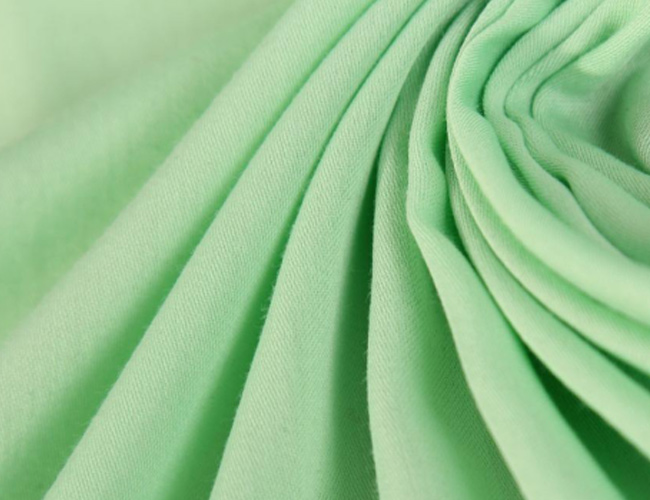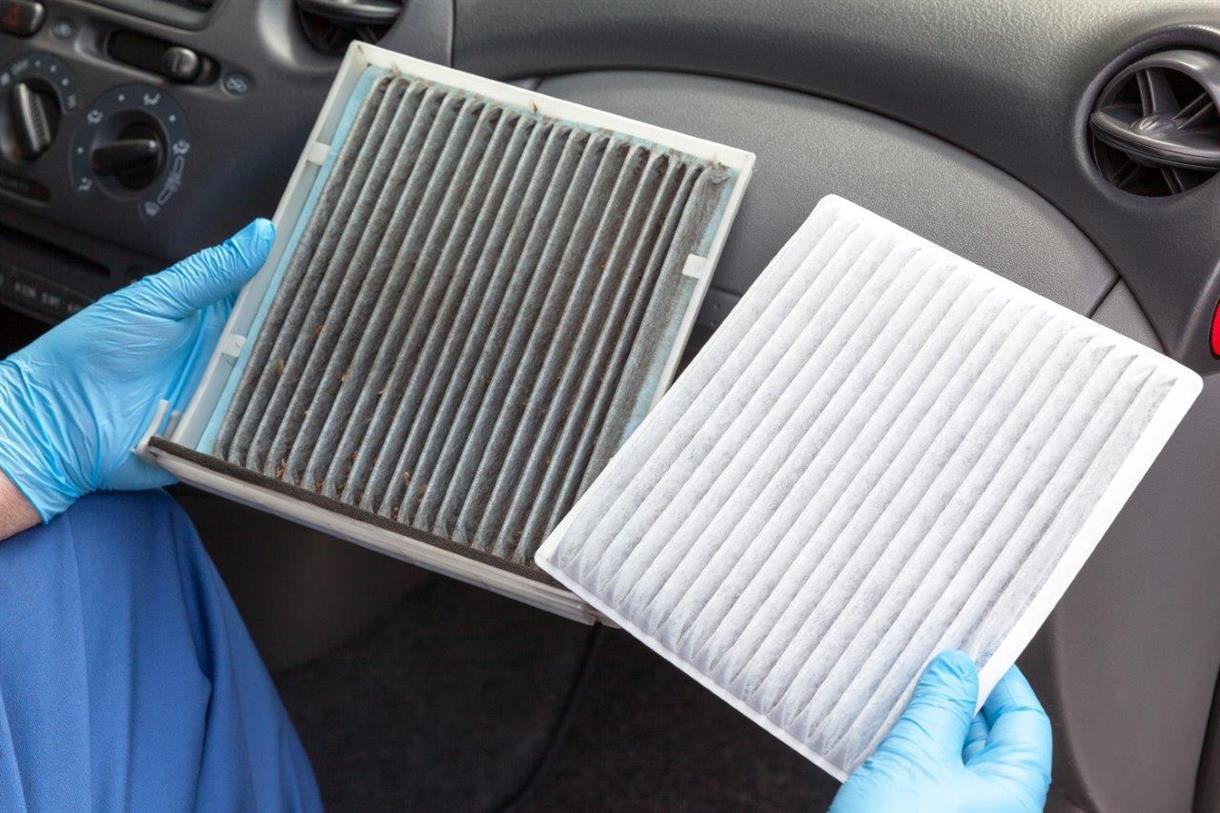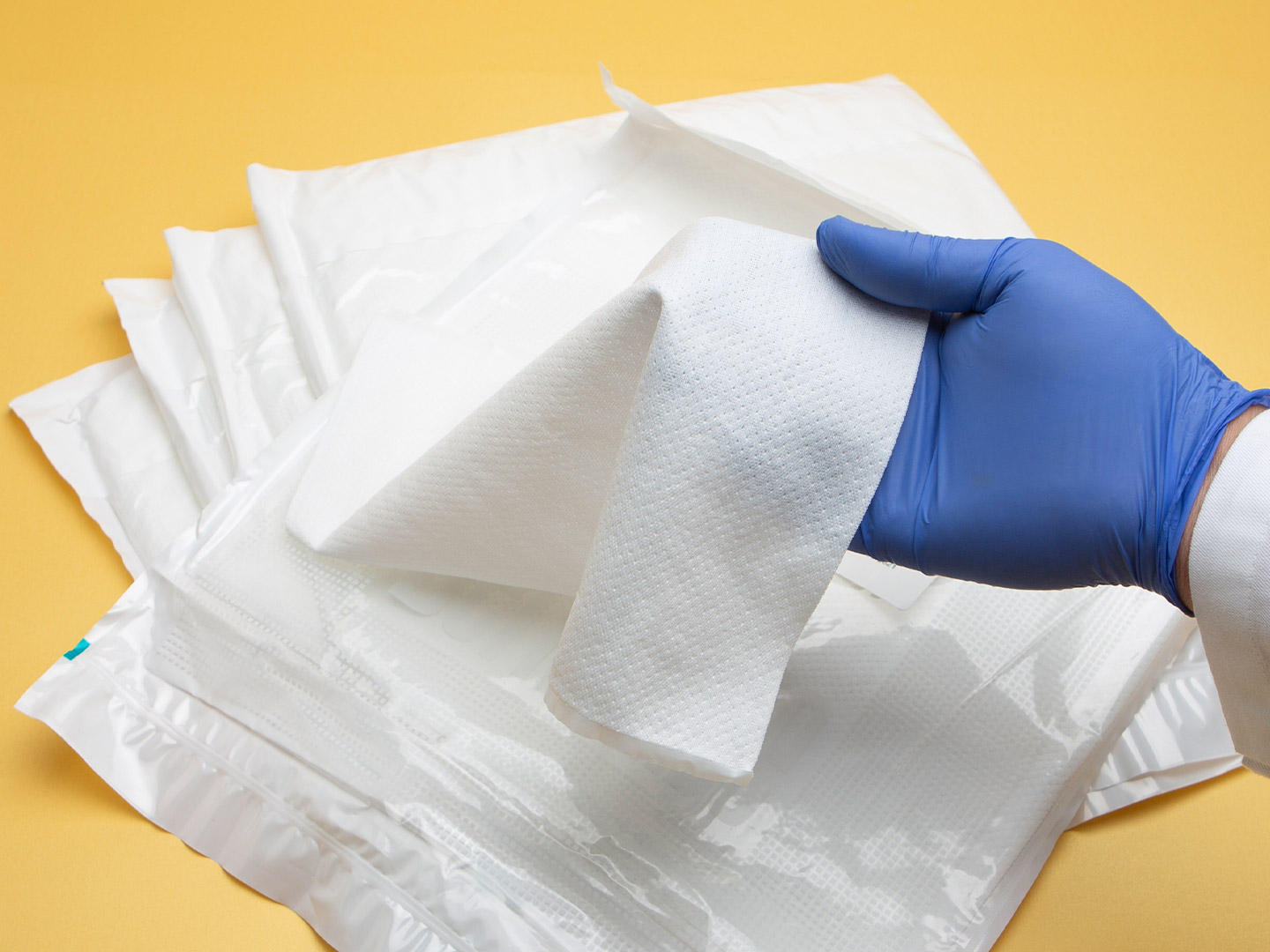People's taste for clothes is getting higher and higher. And there are more and more kinds of fabrics for clothes, like nylon, fiber, silk, and polyester. All kinds of fabrics are like springing up to compete with each other, making our eyes dazzled. The bamboo fiber fabric is the best among many fabrics. This fabric uses natural bamboo as the raw material and has unique properties. Let's take a look at the details of bamboo fabric.

Bamboo fabric is a cellulose fiber extracted from grown bamboo. The fibers of the bamboo plant are thicker and can be made into very durable fabrics. These fibers are very absorbent and so do not need to be colored with many dyes. A new type of fabric made by weaving. With: smooth and soft warm, antibacterial, moisture absorption and breathable, green, anti-UV, natural health care, comfortable and beautiful characteristics. Experts point out that bamboo fiber is a real sense of the natural environmental protection of green fiber.
Bamboo is used is familiar to everyone, but applied to the field of clothing in recent years. The fiber processed from bamboo is called bamboo fiber. And bamboo fiber is divided into two categories.
Natural type: Bamboo raw fiber is a natural bamboo fabric made by a combination of physical and chemical methods.

The raw material is 3-4 years old strong and sturdy green bamboo;
Bamboo sheets are made by cutting off the bamboo, removing the joints, and cutting the bamboo into sheets. The length of the sheets is determined according to the needs;
Boil the bamboo sheets, put the bamboo sheets into boiling water, and boil them;
Crushing, the bamboo sheets are taken out and crushed and hammered into fine shreds;
Steaming, the bamboo shreds are then steamed in a pressure cooker to remove some of the pectin, hemicellulose, and lignin;
Biological enzyme degumming, while decomposing lignin, hemicellulose, and pectin, a certain amount of enzyme can also be added to the treatment solution to decompose cellulose. To get finer raw bamboo fibers;
Combing fiber, the enzymatic decomposition of bamboo fiber cleaning, bleaching, oiling, softening, loosening, and combing to get the original bamboo fiber for textiles;
The final fiber is obtained for textile use.
Chemical: Chemical bamboo fiber includes bamboo pulp fiber and bamboo charcoal fiber.
Bamboo pulp fiber is bamboo chips into pulp. And then the pulp into a pulp and then wet spinning into the fiber. Its production and processing process are like viscose.
Bamboo charring, high-temperature charring of alpine bamboo that is more than 5 years old. With continuous processing.
Bamboo charcoal activation, after activation treatment of bamboo charcoal. Its tissue bonding density increases and becomes hard. The charcoal rate can reach more than 85%.
Crushing bamboo charcoal, the activated bamboo charcoal is crushed. And made into sub-nanometer bamboo charcoal powder.
Uniform dispersion, mixing the bamboo charcoal powder into the raw pulp such as polyester or viscose. And stirring to make it dispersed in the raw pulp.
In spinning, the filament containing bamboo charcoal powder is extracted from the raw pulp through the drawing equipment. And it can also be cut into cotton or wool type staple fiber, medium-length fiber, etc. according to the need. So get bamboo charcoal fiber.
Knitted and woven fabrics and garments made of bamboo fiber yarn as raw material. They have a unique style that is different from cotton and wood-type cellulose fiber. With high strength, abrasion resistance, moisture absorption, drapability, and soft hand feeling, cool and comfortable to wear.
Bamboo yarn for clothing fabrics, mats, bed sheets, curtains, scarves, etc... Such as the use of blended with the vinyl method can produce light clothing fabrics.
Blended with cotton, wool, hemp, silk, and chemical fibers, used for weaving or knitting. Production of various specifications of woven fabrics and knitted fabrics. Woven fabrics can be used to make curtains, jackets, casual wear, suits, shirts, bed sheets and towels, bath towels, etc... Knitted fabrics are suitable for making underwear, sweatshirts, T-shirts, socks, etc.
Bamboo cotton blended yarn with less than 30% of original bamboo fiber is more suitable for underwear and socks. And can also be used to make medical care products.
It is also used in the manufacture of tissue paper. In recent years, bamboo fiber as the raw material for the healthy and friendly bamboo fiber tissue paper began to appear.
Antibacterial and Antibacterial Function.
The bacteria on bamboo fiber products are killed about 75% after 24 hours.
Deodorization and Adsorption Function.
It can adsorb formaldehyde, benzene, toluene, ammonia, and other harmful substances in the air and drop a bad odor.
Moisture-Absorbing and Moisture-Removing Function.
Because the bamboo fiber fabric is filled with many irregular oval-shaped holes, so that it can absorb and evaporate moisture well, which also ensures its dryness.
Super Anti-Uv Function.
The UV penetration rate of cotton is 25%, and the UV penetration rate of bamboo fiber is less than 0.6%. Its anti-UV ability is 41.7 times of cotton.
Super Health Function.
Bamboo contains rich pectin, bamboo nectar, tyrosine, vitamin E and SE, GE, and many other trace elements of anti-cancer and anti-aging functions.
Comfortable and Beautiful Function.
Bamboo fabric unit fineness fine, good whiteness, dyed color Confucian, bright and real. Not easy to fade, luster bright, rich and scraping, elegant and generous, good drape, with a natural and simple elegant texture.
Cooling Effect
The hot and sticky summer always makes people go to seek cool goodies. And bamboo fiber happens to bring its own cooling effect.
Bamboo fiber is hollow, with fiber gaps such as capillaries all over the fiber surface. So it can absorb a lot of water and evaporate it, 36 ℃, 100% relative humidity environment. Bamboo fiber has a moisture return rate of up to 45% and is 3.5 times more breathable than cotton. So absorbing moisture and drying, with its own cooling effect.
Not Easy to Mold, Sticky, Smelly
The most worrying thing in summer is a large amount of sweat adhering to the bedding, breeding bacteria so that the bedding is sticky, moldy, and odor.
The bamboo fiber besides good moisture absorption and breathability keeps the fabric dry. Containing the "bamboo Kun" component, also has natural antibacterial, antibacterial properties. It can avoid the proliferation of bacteria, so that bamboo fiber fabrics even in the warm and humid summer is not moldy, not smelly, and not sticky.
Comfortable and Soft
Bamboo fiber surface without curl, smooth surface, the woven fabric is meticulous and smooth, light and comfortable, and skin contact can make people have the feeling of being cared for.
Green Health and Environmental Protection
Compared with other renewable cellulose fiber raw materials such as wood, the bamboo growth cycle is shorter, 2-3 years can be used, for resource constraints have a certain alleviating effect. And the fiber can be degraded in the environment, and will not produce pollution to the environment.
Bamboo fabric before washing, rinse in water once, this will make the fabric more smooth and soft, and not easy to fade when washing in the future.
Bamboo fiber fabric should be washed at room temperature. Not soaked at high temperature. Not tumble dry when machine washed, put in ventilation and avoid light to dry after washing, not exposed to sunlight. If ironing must choose a low temperature.
According to the classification of bamboo fiber. Bamboo original fiber bedding shrinkage rate within 3%, can be machine washed at high temperature. The bamboo pulp fiber products, a recycled viscose fiber, finished bed shrinkage in 8%. So, should not be high-temperature washing, also not be machine washed, and have to be hand-washed at low temperature. If you use the dryer, the temperature should not cross 35 degrees Celsius, to prevent excessive shrinkage.
With lace, pendants, and other decorations, must be removed before washing. When drying clothes should be laid flat to dry, and prohibit excessive stretching of clothes to prevent clothing deformation. Fold when preserving, and put a certain amount of mothballs, in a dark place, with low humidity, ventilation place storage.
Bamboo fiber and cotton absorbency comparison, bamboo fiber absorbency is good. so the clothes are made of bamboo fiber than cotton breathability. Can take a basin of pure water, the same grams of cotton and bamboo fiber placed inside, cotton will float on top of the bamboo fiber will sink. It can be compared to the bamboo fiber absorbency good.
Anti-bacterial
Bamboo fiber is extracted from bamboo, and bamboo has better antibacterial properties. So antibacterial bamboo fiber is better.
Comfort
Cotton is flocculent. Bamboo fiber into silk because bamboo fiber is a regenerated fiber, length and fineness can be controlled. Cotton fiber is formed, and length and fineness are fixed. Cotton has no luster, bamboo fiber is a bit brighter than silk, so bamboo fiber fabric feels softer.
Price
Bamboo fiber products than cotton products are more expensive, and then the bamboo fiber's warmth is not as good as cotton products. From the price and warmth comparison, the cotton will be better.

Shandong, Zhejiang, and Guangdong are all major textile-producing provinces. And there are manufacturers of bamboo fiber products in these places. Yet, they each have their own advantages. So, Shandong's bamboo fiber towel factory is the most, bamboo fiber towels should be Shandong's cheap, and the quality is also good. Such as Shandong's Guilian bamboo fiber towel is one of the earliest bamboo fiber towel brands in China. They have their own factory, which is a real bamboo fiber manufacturer. Want to know more details, you can consult us G&F.
The main bamboo-producing countries are China, India, Myanmar, Thailand, Bangladesh, Cambodia, Vietnam, Japan, Indonesia, Malaysia, Philippines, Korea, Sri Lanka, etc...
Bamboo is the favorite food of pandas, which are national treasures of China and have a special significance to the country. The giant panda is a mammal belonging to the family of carnivorous bears, with black and white body color, and looks very well behaved and cute. The panda is endemic to China and its main habitats are the mountainous areas around the Sichuan Basin in central and western China and the Qinling Mountains in southern Shanxi. It feeds on bamboo and eats some animals.
Bamboo fabric people tend to be more concerned about the quality. Besides the price is also more concerned about, that bamboo fiber fabric how much a meter?
Bamboo fabric is bamboo as raw material by a special process made of bamboo fiber, a new type of fabric made by weaving. With: smooth and soft warm, antibacterial, moisture absorption and breathable, green, anti-UV, natural health care, comfortable and beautiful features. Experts point out that bamboo fabric is a real sense of natural environmental protection type green fiber. Bamboo fabrics are popular among consumers because they completely replicate the inherent characteristics of bamboo fiber. And the demand for the product is rising year by year.
The price of embryo cloth is generally 16-18 pieces/yard, and the finished cloth is about 20 to 26 yuan/yard.
The price is not expensive. It should be said that you get what you pay for. The material is indeed good and does have many benefits for the human body.
Natural Bamboo Fiber
Natural bamboo fiber is bamboo fiber. Bamboo fiber is made by a combination of physical and chemical methods of natural bamboo fiber. Bamboo fiber is made by a combination of physical and chemical treatments.
Chemical Bamboo Fiber
Chemical bamboo fiber can be divided into bamboo pulp fiber and bamboo charcoal fiber.
Bamboo Pulp Fiber
Bamboo pulp fiber is pulp made from bamboo chips, which are then made into pulp and then wet spun into fiber. The manufacturing process is like viscose.
Bamboo Charcoal Fiber
It is a fiber product using nano-scale bamboo charcoal powder. It is added to the viscose spinning solution through a special process. And then like the conventional spinning process.
In the Compendium of Materia Medica, there are 24 references to the different medicinal functions and prescriptions of bamboo. And there are a thousand bamboo remedies in folklore. Modern medicine believes that the antioxidant compounds in bamboo elements can scavenge free radicals and esters of peroxides in the body, and block the strong carcinogenic N-ammonium nitrite compounds, which not only can improve the body's immunity, but also has the biological efficacy of nourishing the skin and anti-fatigue and anti-aging. Due to the natural antibacterial function of bamboo fiber products, the products are made without adding any synthetic antibacterial agent and will not cause skin allergy. It can improve the immunity of the body, and also has the biological efficacy of nourishing the skin and anti-fatigue and anti-aging, which is a real natural green health product.
The above is the full introduction to bamboo fabric. Want to know more about garment fabric? You can send your needed information to our email address: [email protected]. G&F already has 20 yuan of overseas wholesale experience, one-stop professional service, and quality products loved by users.
All Rights Reserved: https://www.groupgf.com/info-detail/bamboo-fabric
Copyright Notice: This is an original (translated) article from G&F Group Inc., please indicate the source from G&F Group Inc.. If there is any infringement, please contact us first.
 Nonwovens in daily life ----- filtration
Nonwovens in daily life ----- filtration
 Nonwovens in daily life ----- automotive
Nonwovens in daily life ----- automotive
 What is SAP – superabsorbent polymers
What is SAP – superabsorbent polymers
 The Future of Global Nonwoven Wipes to 2029
The Future of Global Nonwoven Wipes to 2029